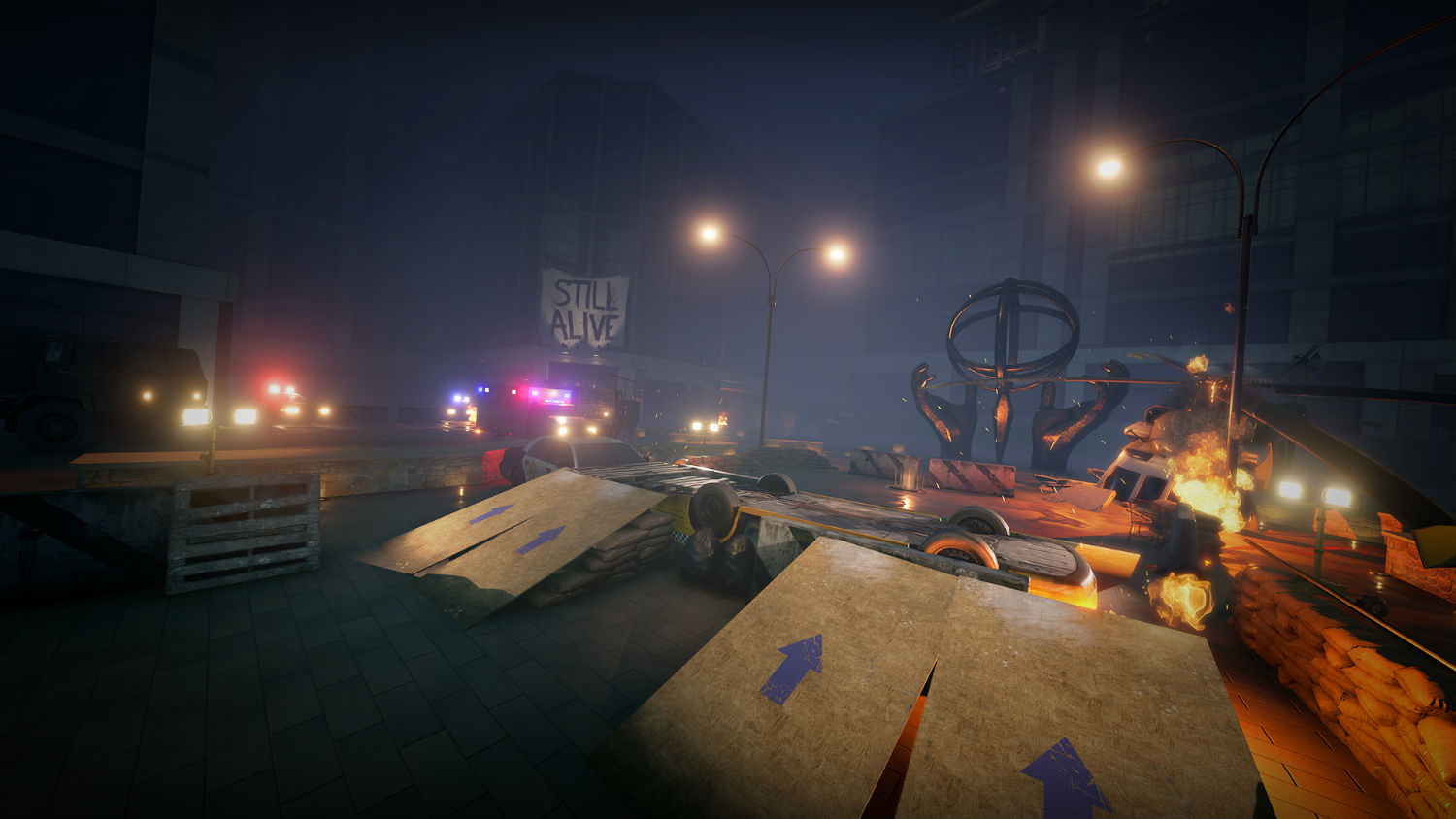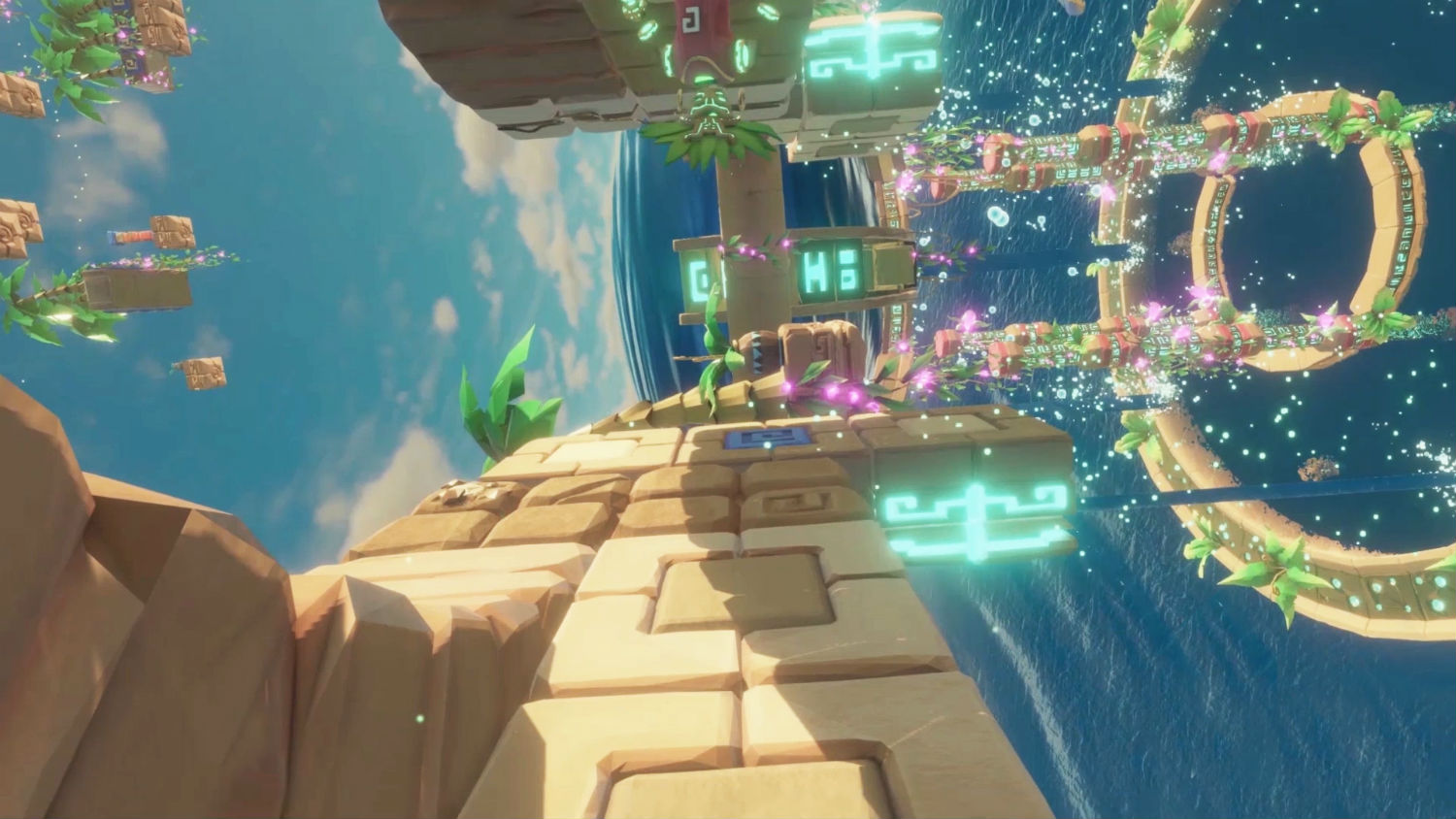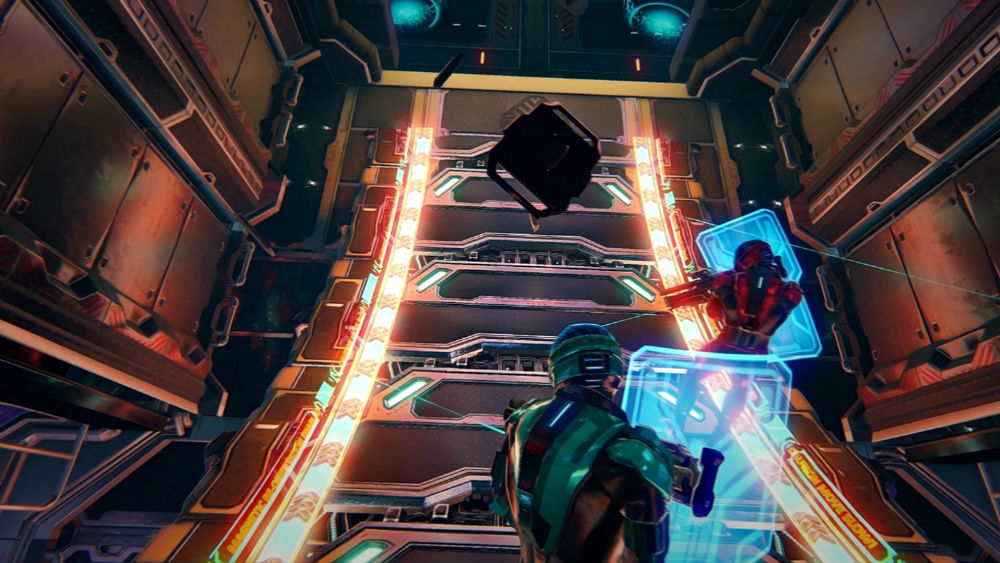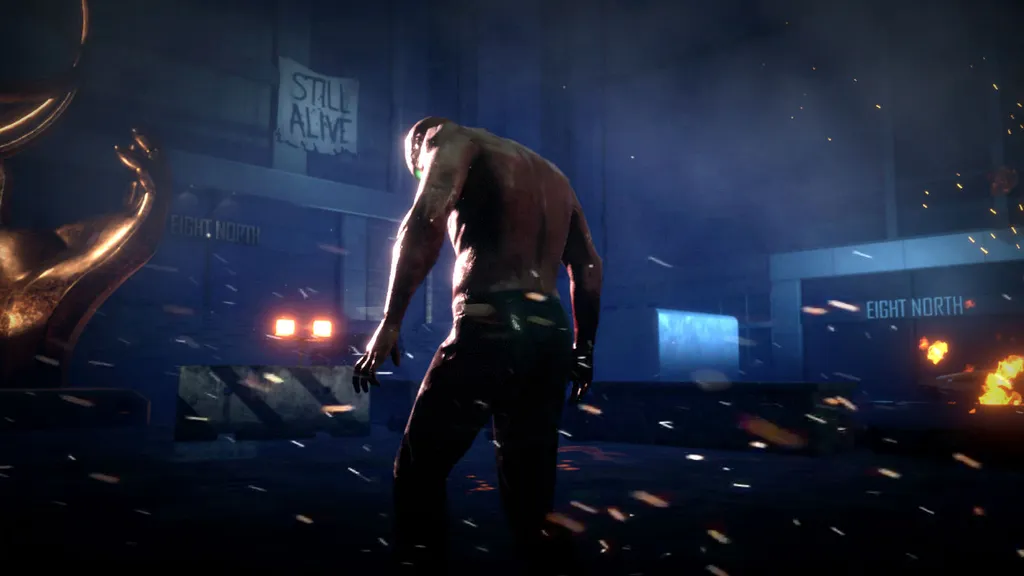I walked into a zombie apocalypse, and experienced an incredible illusion. Zero Latency’s newest free-roam VR adventure, Outbreak Origins, integrates what Co-Founder and CEO Tim Ruse explains as their “special sauce.”
Watch the game trailer:
The game on-boarding begins with up to eight players being suited up in Zero Latency’s gear – an OSVR HDK2 HMD, Razer integrated headphone and microphone to communicate with others in-game, a backpack with Alienware PC gaming computer, and custom hand-held gun. Players then congregate on the flat, rectangular game floor. Zero Latency’s gaming arenas range from about 2,000 to 4,000 square feet, and games can be adjusted based on available floor space, even working around any pillars that can’t be removed in the physical building.
Outbreak Origins starts with players transferred to the virtual world, for a briefing of their mission via non-CGI news footage on a massive screen. The team mission is nothing short of saving humanity by finding a cure for the zombie outbreak, while fighting off the undead. Individual players also compete against each other for the highest points by getting the most zombie head-shots and not dying, or dying the least amount of times. Ruse says “this game brings together everything we have learned from building and shipping [free roam VR] content for the last three years.” According to Ruse, Zero Latency has seen more than 200,000 plays, with more than 22,000 new plays each month.
Players fight off the undead using a physical prop gun, which has the ability to transform to a virtual assault rifle, shotgun and sniper depending on what each individual player prefers, throughout the experience. But this is not just another zombie shooter game. And while the ability to roam around a large space with up to eight players is not something many companies are currently offering, what makes it truly unique is Zero Latency’s application of an incredible illusion.
Zero Latency’s “Special Sauce”

In Outbreak Origins, even though the physical play space is flat, I was able to climb to different heights, and see my teammates playing below. Ruse explains that this “patent pending VR control system” allows players to “feel like they have been seamlessly separated into a much larger or different shaped space than they are actually in… This illusion is most noticeable when you are taken to different heights which suddenly draws people even deeper into the virtual world when they see their friends who were only a moment ago standing next to them, suddenly high up above them on a platform or catwalk. That sudden feeling of physical separation from a person who you know is physically there really draws you into the experience.”
While other free-roam VR experiences that I’ve tried trick people into feeling that they can roam further than the physical space they are in, Zero Latency also extends the play-space upwards and downwards for players in the same scene.
The illusion can also be experienced in other Zero Latency experiences. Engineerium and Singularity won first and second place respectively this year at IAAPA’s Brass Ring Best New Product awards for Games and Devices – Midway Games and Equipment. In Engineerium, players are able to walk up and down ramps and walls, while solving puzzles together in a brightly-colored alien world. Singularity allows players to walk on floors as well as walls in gravity boots, while battling robots, drones and more.
As Zero Latency is also in the business of developing custom training solutions which could include simulations for groups like the military, the ability to have groups in a range of multi-level environments is of great benefit.
Why does it work?

Ruse explains that the journey that Zero Latency takes players on is vital for their “special sauce” to work. “We take you up and down and around. Up lifts, through corridors. Your sense of space is gone. You are making a new map of what your brain perceives as real…I think that walking large expanses is what makes this happen… your brain has started to map the digital world directly on to what the real world was before.”
And, the illusion works best after a longer period of time in VR. “It ramps up sharply the more you walk through unique environments…We see this happening after five to seven minutes in the game, and it ramps up sharply the more you walk through unique environments. At that point you are highly susceptible to things like high places. That’s why longer experiences get better results.” Outbreak Origins is a thirty-minute experience, as is Singularity. Other current Zero Latency games like Zombie Survival and Engineeerium also pass the five to seven-minute park, at fifteen minutes each.
The only moments that temporarily broke the illusion for me was when I was climbing up to another virtual level, because I didn’t feel the physical presence of stairs or a steep slope at my feet. Adding physical stairs or a ramp in the space to feel this sensation would only constrain the scale and layout of Zero Latency’s virtual worlds. So, a solution could simply be that their virtual ramps be longer, with less slope to get players to new heights without such an apparent gap between the physical and virtual climb.

How It’s Developed
Ruse was tight-lipped on how this illusion is developed, but he did share that one of the first steps in building each virtual environment for Zero Latency is mapping out different levels within it. He explains the process further: “We first start by sectioning up the physical space and then treat each section as it’s own virtual piece of the environment. These independent pieces can then be moved and traversed in isolation which gives us the ability to send people up a lift, traverse a catwalk or even ride a helicopter completely independently to everyone else in the experience, despite the one physical space being shared.”
What’s Coming Next
Zero Latency plans to release one new experience every three to four months. They’re focusing on competitive content, as well as building more team adventures. What they’re building, Ruse says, is “a push towards a full blown next gen esports platform”
And, they are expanding. Currently Zero Latency has locations in Australia, Japan, Mexico, Spain, and The United States. They already have ten sites under development for 2018, with a target of one-hundred sites in the next three years, focusing on Europe and North America.


























